Q
Does Ferrari 296 have a manual or automatic transmission?
The Ferrari 296 is equipped with a wet dual-clutch transmission (DCT), an automatic transmission technology. This transmission enables rapid and smooth gear shifts, providing the vehicle with enhanced acceleration performance and comfortable driving experience. The dual-clutch transmission features two clutches: one handles odd-numbered gears (1st, 3rd, 5th, etc.), while the other manages even-numbered gears (2nd, 4th, 6th, etc.). Through the coordinated operation of these two clutches, its shift times are significantly reduced while maintaining continuous power output during gear changes, which not only improves the vehicle's acceleration times but also reduces fuel consumption to some extent. Additionally, certain DCT transmissions offer manual shift modes, allowing drivers who prefer to control shift timing to enjoy the engagement of manual driving. The Ferrari 296 combines the advantages of both automatic and manual transmissions.
Special Disclaimer: This content is published by users and does not represent the views or position of PCauto.
Related Q&A
Q
What are the differences between Ferrari F8 and 296?
There are several differences between the Ferrari F8 and the 296. In terms of powertrain, the F8 is equipped with a 3.9T V8 twin-turbo engine delivering a maximum power output of 530 kW, while the 296 features a plug-in hybrid system combining a new 120° V6 engine with an electric motor, achieving a combined system output of 610.294 kW. Regarding exhaust sound, the 296 GTB has been specially tuned to produce a more pronounced note compared to the F8.
In exterior, the F8 measures 4611 mm in length, 1979 mm in width, and 1206 mm in height with a 2650 mm wheelbase, whereas the 296 GTB is 4565 mm long, 1958 mm wide, and 1187 mm tall with a 2600 mm wheelbase. Both models shows distinct styles and details.
For the interior, the 296 incorporates certain design elements from the SF90, including the touch-sensitive ignition switch, giving it a more technologically advanced feel similar to the F8.
In price, the F8 is priced at RM 3.057 million, while the 296 GTB is priced at RM 1,228,000 and the 296 GTS at RM 1,448,000.
In summary, each model has its own advantages: the F8 embodies the allure of traditional combustion power, while the 296 showcases Ferrari's pioneering advancements in hybrid technology.
Q
Is Ferrari 296 electric?
The Ferrari 296 is a plug-in hybrid vehicle, not a pure electric vehicle. Its fuel type is Petrol Hybrid (HEV, MHEV), and it is equipped with an internal combustion engine and an electric motor. Taking the 2022 model as an example, the engine delivers a maximum horsepower of 663 PS, while the electric motor produces 166 PS, resulting in a combined system output of 830 PS. The official all-electric range is 25 km. It utilizes a ternary lithium-ion battery with a capacity of 7.45 kWh and an energy consumption rate of 14 kWh/100 km. This hybrid configuration allows the Ferrari 296 to accommodate short-distance travel in pure electric mode, reducing emissions and fuel consumption, while the coordinated operation of the engine and electric motor provides supercar-level performance when needed. The vehicle achieves a top speed of 330 km/h, with an official 0-100 km/h acceleration time of just 2.9 seconds.
Q
What's the design of Ferrari 296?
The Ferrari 296 draws inspiration from multiple aspects. Its design DNA pays homage to the legendary 1963 250 LM, a Le Mans prototype racer, with the 296 GTS specifically engineered to be similar to the 296 GTB's aerodynamic profile and downforce characteristics when the roof is closed. Moreover, it also draw inspiration from the 250 LM. The overall styling retains elements from the simplicity and functional features of 1960s sports cars, featuring sculpted body lines, a "no B-pillar" design, unique fender and intake combinations, and a truncated tail. The cockpit design of the 296 GTB follows the SF90 Stradale's approach, adopting a fully digital interface that enhances its sporty and luxurious feel. This blend of historical and modern elements not only pays homage to Ferrari's heritage but also aligns the 296 with contemporary automotive advancements, delivering a unique and exhilarating driving experience.
Q
How fast is Ferrari 296?
Ferrari 296 can achieve an impressive top speed. Both the 2022 Ferrari 296 GTB V6 and 296 GTS V6 have a maximum speed of 330 km/h. This remarkable speed is accomplished through a powerful combination of components. They are equipped with a petrol-hybrid system where the engine and electric motor work together. The engine is a turbocharged V6 with substantial horsepower, while the electric motor provides additional power. The advanced transmission and drivetrain also play crucial roles in enabling the vehicle to reach such high speeds. Additionally, the aerodynamic design of the Ferrari 296 helps reduce drag coefficient and enhances stability at high velocities. Moreover, the 296 GTB and GTS can accelerate from 0 to 100 km/h in just 2.9 seconds, delivering rapid bursts of speed. In pure electric mode, they can also reach a top speed of 135 km/h with a pure electric range of 25 km.
Q
What's the base price of Ferrari 296?
The Ferrari 296 has different models, and their base prices also vary. Among them, the price of the 2022 Ferrari 296 GTB V6 is RM 1,228,000, and the price of the 2022 Ferrari 296 GTS V6 is RM 1,448,000. The Ferrari 296 belongs to the supercar category, with extremely powerful performance. It uses a Petrol Hybrid (HEV, MHEV) fuel type, combining the advantages of a fuel engine and an electric motor. Its official 0-100km/h acceleration takes only 2.9 seconds, and the top speed can reach 330km/h. In addition, the vehicle's configurations like suspension and braking are also outstanding. The front suspension is a double-wishbone independent, and both the front and rear brakes are ventilated disc brakes, paired with an electronic parking brake, ensuring excellent handling and safety.
Q
Is the 296 a supercar?
Yes, the 296 is indeed a supercar. In terms of performance, the 296 GTB is equipped with a new 120° V6 turbocharged engine producing 663 horsepower, combined with an electric motor delivering up to 166 horsepower, resulting in a total powertrain output of 830 horsepower. It achieves a top speed of 330 km/h and accelerates from 0-100 km/h in just 2.9 seconds according to official figures, demonstrating robust power delivery and quick acceleration.
In design, the 296 incorporates typical aerodynamic features of supercars, such as the signature "tea-tray" front spoiler that generates significant downforce. Its compact body shape and short 2,600mm wheelbase enhance agility and handling. These design elements not only ensure a striking appearance but also optimize performance.
Furthermore, the 296's price positions it firmly within the supercar segment, with the 296 GTB priced at RM1,228,000 and the 296 GTS at RM1,448,000. Considering all these factors together, the 296 undoubtedly qualifies as a true supercar.
Q
What are the differences between Ferrari 296 and Turbo S?
The Ferrari 296 is available in models such as the GTB and GTS, which differ from the Turbo S in multiple aspects. In terms of powertrain, the Ferrari 296 utilizes a petrol hybrid system (HEV/MHEV). For instance, the 296 GTB is equipped with a 3.0L V6 twin-turbocharged gasoline engine paired with a rear electric motor, delivering a combined system output of 830 horsepower. Its official 0-100 km/h acceleration time is 2.9 seconds. If the Turbo S refers to the Porsche 911 Turbo S, it is powered by a 4L twin-turbocharged V8 engine, with specific performance figures differing from the 296.
Regarding exterior design, the 296 GTB features distinctive elements such as its signature "tea-tray" front spoiler and innovative rear style. Different brands and models exhibit their own unique design languages, with variations in lines, proportions, and overall aesthetics.
Inside the cabin, the Ferrari 296 blends Italian flair with cutting-edge digital technology, while the Turbo S interior reflects Porsche's characteristic design philosophy. The two differ in material choices, layout, and human-machine interface design.
For price, the 296 GTB is priced at RM1,228,000 and the 296 GTS at RM1,448,000, whereas the price of Turbo S varies depending on specific model configurations and other factors.
Q
What are the differences between 296 and SF90?
Both the 296 and SF90 are exceptional sports cars under the Ferrari brand, but they differ in multiple aspects. In terms of price, the 296 starts at RM 1,228,000 (296 GTB) and RM 1,448,000 (296 GTS), while the SF90 has a higher manufacturer's suggested retail price. Regarding body dimensions, the 296 GTB measures 4565mm in length, 1958mm in width, and 1187mm in height, with a wheelbase of 2600mm. The SF90, on the other hand, measures 4704mm in length, 1973mm in width, and 1191mm in height, with a wheelbase of 2649mm, making it larger.
Their drivetrain configurations also differ: the 296 GTB is rear-wheel drive, with both the engine and electric motor positioned on the rear axle, whereas the SF90 is an all-wheel-drive vehicle, featuring two motors on the front axle that independently power the front wheels.
In terms of powertrain, the 296 is equipped with a 2.9L twin-turbocharged V6 engine paired with a rear-axle electric motor, adopting a plug-in hybrid system with a maximum output of 830 horsepower. The SF90, meanwhile, features a 4.0L turbocharged engine delivering 780 PS and 800 N·m of torque, and its overall system performance also varies.
These differences allow consumers to make a choice based on their individual needs and preferences.
Q
Is Ferrari 296 an entry-level model?
The Ferrari 296 is not an entry-level model. In terms of price, its selling price ranges from RM 1,228,000 to RM 1,448,000, far exceeding the price range of ordinary entry-level vehicles. In terms of performance, it belongs to the supercar category, featuring a powerful powertrain with a maximum engine output of 663PS, an electric motor delivering 166PS, and a combined system output of 830PS. The official 0-100km/h acceleration time is just 2.9 seconds, with a top speed of 330km/h—performance unattainable by entry-level vehicles. Additionally, it incorporates advanced high-end configurations such as a gasoline-electric hybrid system, all-wheel drive, double-wishbone independent suspension, and ventilated disc brakes. These features collectively demonstrate that the Ferrari 296 is a premium model designed for consumers seeking exceptional performance and driving dynamics, not an entry-level product.
Q
Is 296 faster than SF90?
It's hard to simply say whether the 296 is faster than the SF90. The 296 GTB has a top speed of 330 km/h and an official 0-100 km/h acceleration time of 2.9 seconds, while the SF90 has a top speed of 340 km/h and an official 0-100 km/h acceleration time of 2.5 seconds. So considering the their performance, the SF90 is faster.
However, speed can be affected by many factors, including the driving environment, the driver's skills, and the vehicle's specific setup. The SF90 has a more powerful overall power system with its 3.9T 781 horsepower V8 engine and advanced hybrid system. The 296, on the other hand, uses a 2.9T V6 engine with hybrid assistance. Different engine characteristics and power delivery methods may lead to different speed experiences in actual driving.
Both vehicles are high-performance supercars from Ferrari, each with its own charm and characteristics, and their speed performance needs to be evaluated comprehensively in various aspects.
Popular Cars
Model Year
Car Compare
Car Photo
Latest Q&A
Q
Does the 2019 Golf GTI have a timing belt or chain?
The 2019 Golf GTI uses a timing chain instead of a timing belt—a design that offers better durability and lower maintenance costs. Typically, a chain lasts as long as the engine itself and rarely needs replacement, whereas a belt requires inspection or replacement every 60,000 to 100,000 km. If neglected, a worn belt can snap and cause severe engine damage.
VW’s EA888 engine family has long relied on chain-driven systems, which are relatively quiet and highly reliable. That said, it’s crucial to periodically check the tensioner’s condition. Some earlier models experienced timing issues due to tensioner design flaws, but this was addressed in the 2019 version.
For performance enthusiasts, a chain system handles high-revving stress better, making it a common choice for hot hatches like the GTI. For daily driving, just stick to VW 50400/50700-spec oil as recommended in the manual—proper lubrication keeps the chain system healthy long-term.
One heads-up: If you hear noticeable metallic rattling near the front of the engine, have the guides or tensioner inspected ASAP. Unlike the telltale belt squeal before failure, this noise is a classic sign of chain-related wear.
Q
What is the recall on the 2019 GTI?
The 2019 Volkswagen Golf GTI was subject to a safety recall addressing two potential issues. First, the fuel pump control unit software could malfunction, potentially causing engine stalling in rare cases. Second, some vehicles might have rear suspension stabilizer link bolts that weren't tightened to specification, posing a loosening risk. Owners can visit authorized dealers for free software updates or bolt retightening.
These proactive recalls demonstrate Volkswagen's commitment to safety. Dealers often handle outstanding recall items during routine maintenance.
For performance-oriented models like the GTI, it's wise to go beyond recall checks. Pay close attention to the turbo system, DSG transmission fluid, and brake wear—these components endure more stress during spirited driving. If warning lights appear or you notice unusual noises, get a professional inspection promptly. Keeping the car in top shape ensures you can fully enjoy its dynamic capabilities.
Q
Does the 2019 GTI require premium gas?
The 2019 GTI does recommend using high-octane fuel (typically RON 95 or above). Its 2.0L turbocharged engine has a relatively high compression ratio, and premium gas ensures optimal performance while reducing knock risk. It also helps maintain engine cleanliness and long-term reliability.
While the car may tolerate lower-octane fuel (like RON 92), you’d see slightly reduced power output and fuel efficiency. Over time, it could also affect engine longevity. Turbocharged engines are particularly sensitive to octane ratings since turbos generate higher heat and pressure—high-octane fuel handles these conditions better.
Mixing different fuel grades occasionally won’t hurt, but sticking to the manufacturer’s recommendation is ideal. Also, periodic fuel additive treatments can help clean carbon buildup, especially for direct-injection engines.
One more thing: even with the same octane rating, fuel additive packages vary by brand. So, picking a reputable gas station matters too.
Q
How long will a 2019 GTI last?
The lifespan of a 2019 GTI largely depends on maintenance and driving habits. With regular oil changes, transmission fluid replacements, and avoiding aggressive driving, it can easily clock over 200,000 kilometers—or even more. Its 2.0T engine and DSG gearbox are proven combos, and as long as you stick to the factory service schedule, mechanical reliability won’t be an issue.
Just keep in mind: turbocharged engines demand extra care. Always use the right spec full-synthetic oil and monitor the cooling system. Climate plays a role too—hot, humid conditions mean paying extra attention to rubber seals and electronics. Every 50,000 km, have the timing chain and high-pressure fuel pump inspected (key items for turbos).
Driving style matters. Don’t redline it constantly, and let the engine warm up properly after cold starts. Rustproofing helps long-term durability, so regular underbody washes are smart. Nail these details, and this car’s built to last.
Q
How fast is the 2019 GTI?
The 2019 GTI truly delivers when it comes to performance. Under the hood lies a punchy 2.0-liter turbocharged four-cylinder, churning out 228 horsepower and 350 Nm of torque. Whether you opt for the engaging 6-speed manual or the lightning-fast 7-speed DSG, this hot hatch rockets from 0-100 km/h in just 6.3 seconds, with an electronically limited top speed of 250 km/h.
What really sets the GTI apart is its razor-sharp handling. The sport-tuned suspension and electronic differential lock work together to deliver precise steering and rock-solid cornering stability. It’s the perfect blend of everyday practicality and proper driver’s car thrills—a well-rounded hot hatch in every sense.
For enthusiasts, the GTI’s tuning potential is massive. Many owners go for ECU remaps or intake/exhaust upgrades to squeeze out even more power. Just remember to keep things street-legal—safety and compliance should always come first. Around here, these pocket rockets have a solid following, and it’s easy to see why.
View MoreRelated News
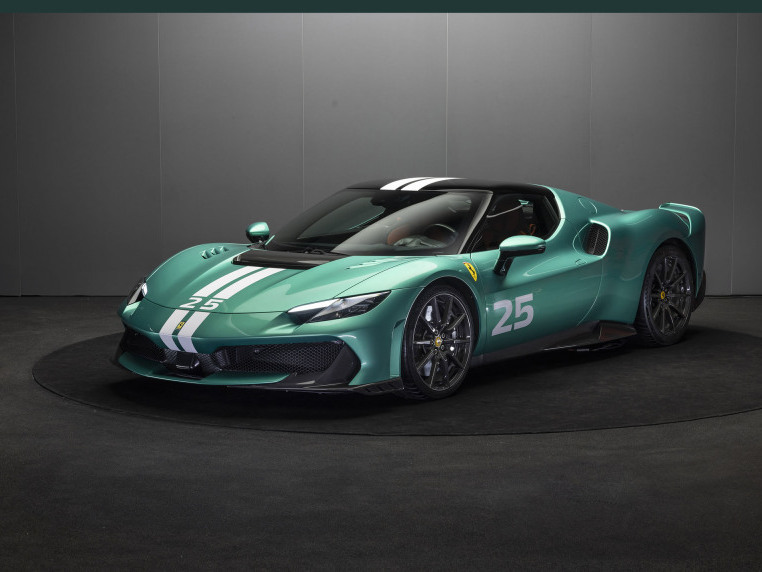
Ferrari Unveils 296 Speciale Plug-in Hybrid Supercar, Accelerating from 0-100 km/h in Just 2.8s
JohnApr 30, 2025
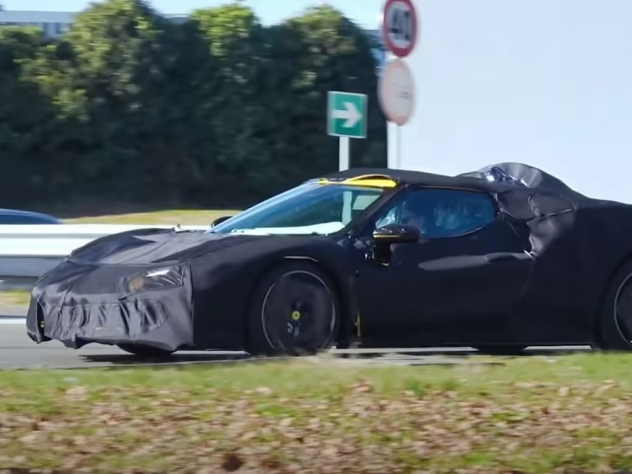
Meet Ferrari's New Track Beast: 296 VS Debuts on April 29
RobertApr 3, 2025

Ferrari unveils the chassis and core components of its first all-electric model, Elettrica
LienOct 10, 2025

Ferrari 849 Testarossa officially released, succeeding the SF90 Stradale with more powerful performance
RobertSep 12, 2025
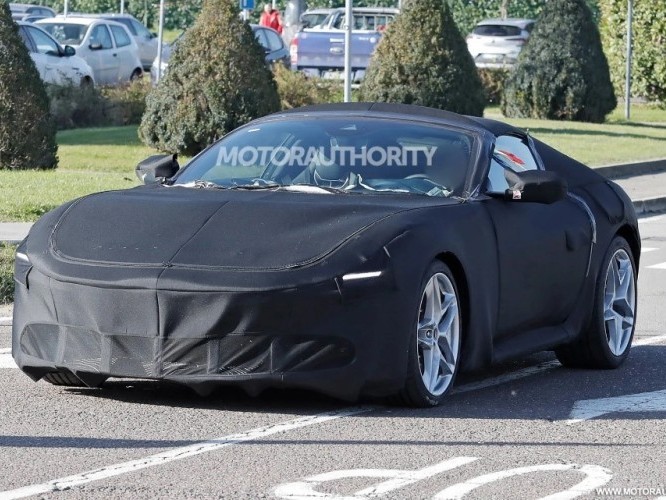
Spy shots of the Ferrari Roma successor revealed! May be released by the end of 2025, Hybrid system could be the highlight
WilliamNov 19, 2024
View More


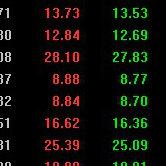







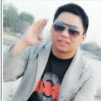







Pros
Cons